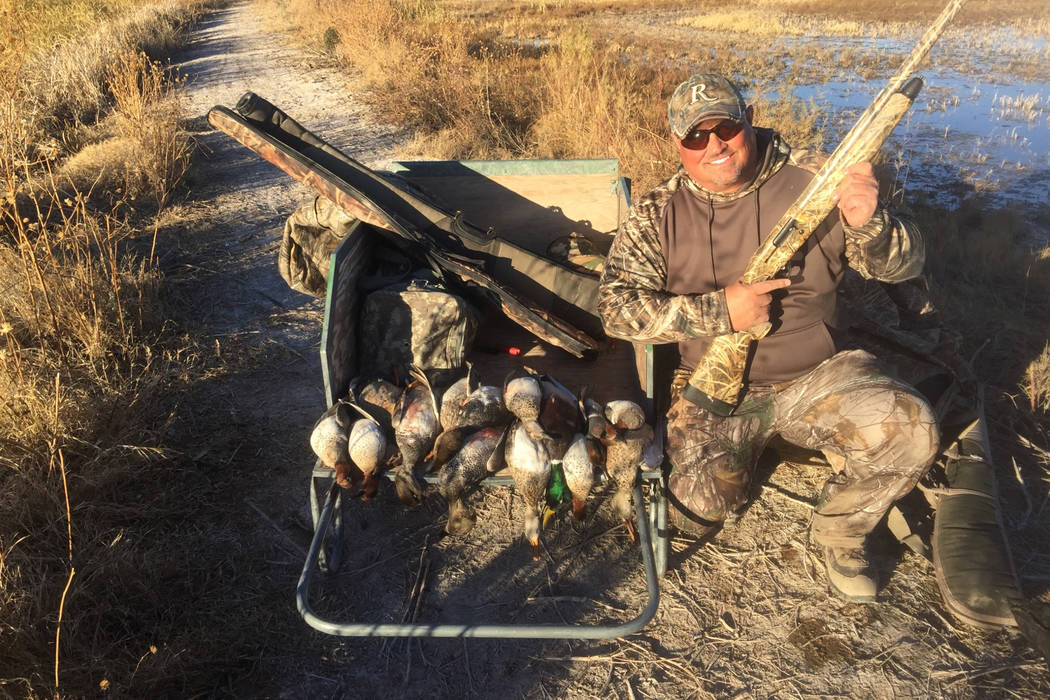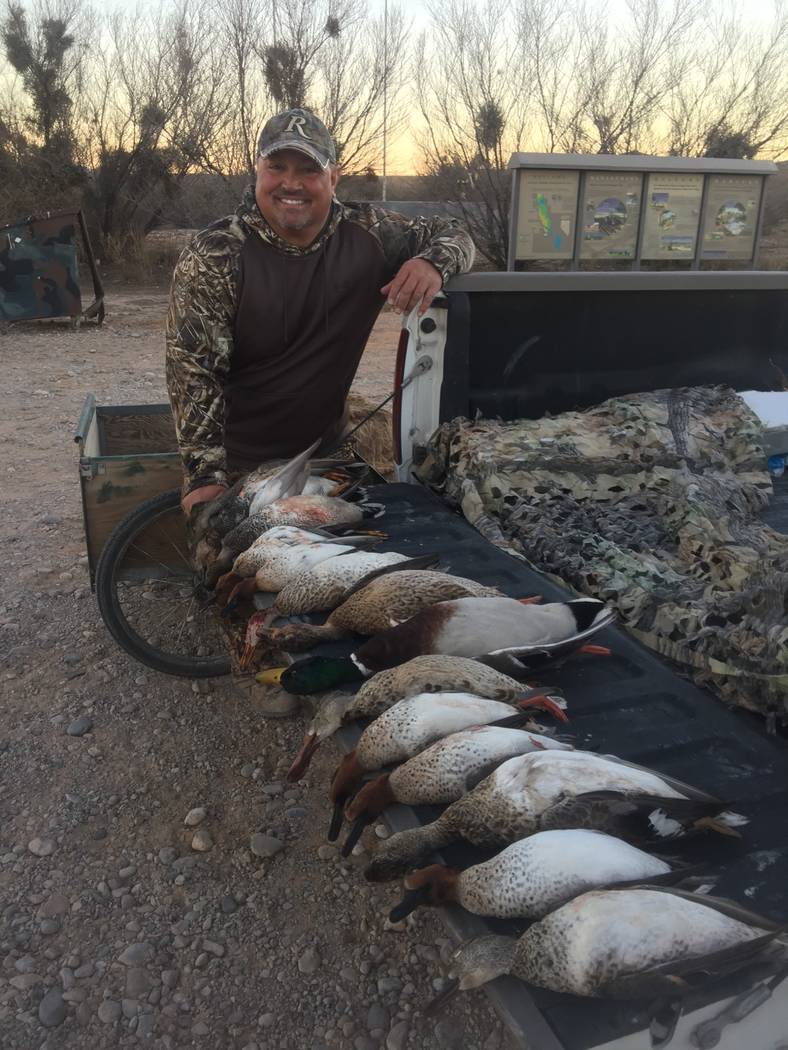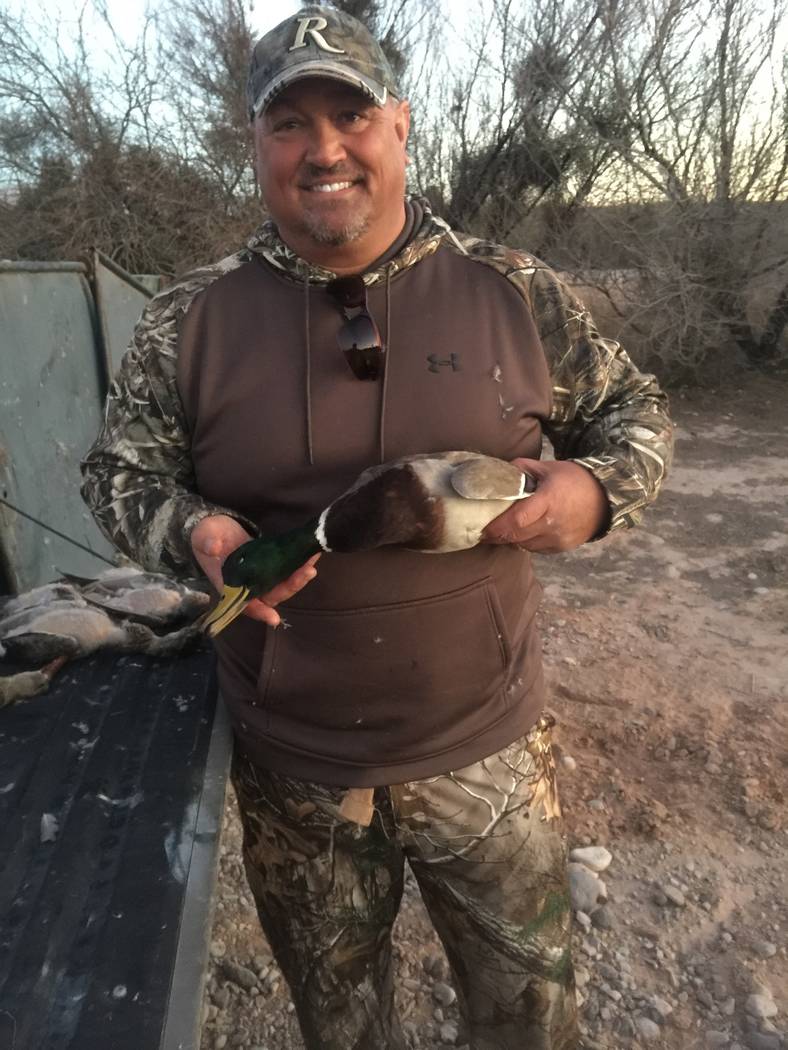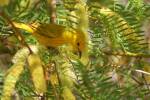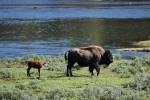Waterfowl hunters get much-needed assist from weather
The cold winter storm that brought high winds and rain to Southern Nevada recently could be just what waterfowl hunters needed going into the final weeks of the 2018-19 hunting season.
While many of us hunkered down somewhere warm, determined hunters such as Rick Welter and his friend Robert Everett, both of Henderson, took advantage of the lull before the storm to go afield in search of ducks. They hoped the approaching weather front and cold temperatures would be enough to push a few late migrators ahead of the storm and into Clark County.
So they loaded up their decoys and drove to the Overton Wildlife Management Area to check in early enough for their reservation at least 1½ hours before legal shooting time. In laymen’s terms, that means they had to be at the check station at 0-dark-30.
Their early morning wake-up call was well rewarded.
“I hunted last Friday, and it looks like some birds have moved into Southern Nevada,” wrote Welter in an email. “There was a pretty constant flow of birds in the air. Between my buddy Robert and I, we managed a two-man limit by 2 p.m. There are a lot of green-winged teal and gadwall in the area right now. We saw plenty of Canada geese as well, but they didn’t want anything to do with us. Regardless, it was a great day to be in the duck blind.”
Located about 70 miles northeast of Las Vegas, the Overton WMA has long been a popular destination for Clark County waterfowl hunters. If you are new to Southern Nevada, you still have time to give the management area a test run before the season ends. Since it is the closest such area to the Las Vegas Valley and its growing population, Overton is popular with local hunters and utilizes a reservation system.
At this point in the season, waterfowl hunting is permitted on the Moapa Valley portion of the management area on even-numbered days and “the closing two days of any duck and goose season,” according to the Nevada waterfowl regulations.
Another late season option is the Key Pittman WMA in Hiko, just north of Alamo. It is open on odd-numbered days along with “the closing two days of any duck and goose season.” No reservations are required here.
Waterfowl hunting also is permitted on the Pahranagat National Wildlife Refuge (NWR) in Alamo, though the U.S. Fish Wildlife Service did not anticipate much waterfowl activity this year due to low water conditions. Due to the ongoing dispute over the federal budget, the U.S. Fish Wildlife Service has closed public access to the country’s wildlife refuges, though the notice of closure does list some exceptions.
It reads, “… where public access to refuge lands does not require the presence of a federal employee or contractor, activities on refuge lands will be allowed to continue on the same terms as before the appropriations lapse …”
A message on the refuge answering machine says only that employees are not authorized to work at this time. I tend to err on the side of caution, but should you choose to head that direction, be prepared to change your plans if you find indicators that the refuge has been closed to hunting. Pahranagat is normally open to hunting on Tuesdays, Thursdays and Saturdays within the season dates defined by Nevada state law.
For those of you with California ties, the weekend storm that hit the Las Vegas area drenched the Central Valley and brought with it green-winged teal and gadwall. For more information about possibilities in that part of the Golden state check out the Ducks Unlimited migration reports at ducks.org.
Arizona accepting tag applications
The Arizona Game Fish Department is accepting applications for 2019 pronghorn antelope and elk tags. This is the second-to-last tag draw for which Arizona will accept paper applications as the agency is moving toward a digital-only application process. The online application process should be available sometime in mid-January. The deadline for paper applications is Jan. 15, 2019 while digital applicants have until Feb. 12 to submit theirs.
Freelance writer Doug Nielsen is a conservation educator for the Nevada Department of Wildlife. His “In the Outdoors” column, published Thursday in the Las Vegas Review-Journal, is not affiliated with or endorsed by the NDOW. Any opinions are his own. Find him on Facebook at @dougwritesoutdoors. He can be reached at intheoutdoorslv@gmail.com.



